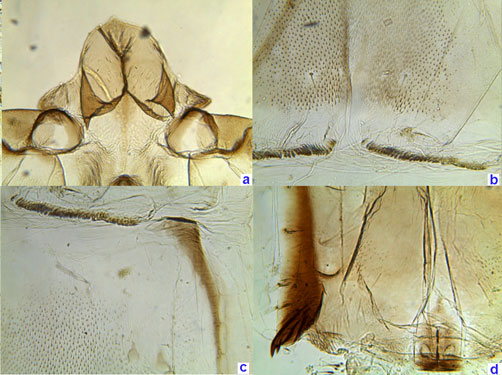Species 5f. C. (Lobochironomus) montuosus.Egan and Ferrington (2015) reported C. (Lobochironomus) montuosus from Yosimite National Park on the basis of pupal exuviae, but the correct locality is coastal rock pools in Isle Royale National Park, Michigan, which may mimic the alpine conditions from which it is reported in Europe. Adults: No adults are known from the Nearctic. About 13 setae in a clear patch on tergite IX. Superior volsella with a hooked end; Inferior volsella a little stretched and slightly bent. Gonostylus reduces to be very narrow over posterior third. The female is also very dark, with the genitalia very similar to those of the subgenus Chironomus. Pupa: (from 2 exuviae collected by Alex Egan - data and photos used with his permission). These pupae fit the Langton description. Length abt. 8 mm. General brown color except for intersegments and anterior anal lobe, marbling of tergite armament laterally, dense small granulation on thorax, small lateral seta at conjunctive IV/V; rims of tergites II-VI rather heavily pigmented; PsB conspicuous.  a. Cephalic tubercles; b. hook row with medial break; c. lateral tergite coloration; d. pupal spur. Fourth instar larva: Not known from North America. Cytology: 4 polytene chromosomes with the thummi-cytocomplex arm combination AB, CD, EF, G. Nucleolus subterminal in the very short arm G; a BR just near the middle of the arm - further from the end than in the other described Lobochironomus species. .jpg) (modified from Ryser et al., 1985) |
Modified: 30 September 2008
Access: UnrestrictedCopyright © 2005-2008, Jon Martin.